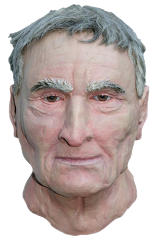 Born in the family castle of Xavier, near Pamplona in the Basque area of Spanish Navarre on April 7, he met Ignatius Loyola and became one of the seven who in 1534, at Montmartre founded the Society of Jesus. In 1536 he left Paris to join Ignatius in Venice, from whence they all in tended to go as missionaries to Palestine (a trip which never materialized), was ordained there in 1537, went to Rome in 1538, and in 1540, when the pope formally recognized the Society, was ordered, with Fr. Simon Rodriguez, to the Far East as the first Jesuit missionaries.
Born in the family castle of Xavier, near Pamplona in the Basque area of Spanish Navarre on April 7, he met Ignatius Loyola and became one of the seven who in 1534, at Montmartre founded the Society of Jesus. In 1536 he left Paris to join Ignatius in Venice, from whence they all in tended to go as missionaries to Palestine (a trip which never materialized), was ordained there in 1537, went to Rome in 1538, and in 1540, when the pope formally recognized the Society, was ordered, with Fr. Simon Rodriguez, to the Far East as the first Jesuit missionaries. During the next decade he converted tens of thousands to Christianity. He visited the Palavas at the tip of India near Cape Comorin, Tuticorin (1542), Malacca (1545), the Moluccas near New Guinea and Morotai near the Philippines (1546-47), and Japan (1549- 51).
 In 1551, India and the East were set up as a separate province and Ignatius made Francis its first provincial. The next year he set out for China, landed on the island of Sancian within sight of his goal, but died before he reached the mainland.
In 1551, India and the East were set up as a separate province and Ignatius made Francis its first provincial. The next year he set out for China, landed on the island of Sancian within sight of his goal, but died before he reached the mainland. He was first buried on a beach of Shangchuan Island. His incorrupt body was taken from the island in February 1553 and was temporarily buried in St. Paul's church in Malacca on 22 March 1553. On 11 December 1553 Xavier's body was shipped to Goa. The body is now in the Basilica of Bom Jesus in Goa, where it was placed in a glass container encased in a silver casket on 2 December 1637.
He was first buried on a beach of Shangchuan Island. His incorrupt body was taken from the island in February 1553 and was temporarily buried in St. Paul's church in Malacca on 22 March 1553. On 11 December 1553 Xavier's body was shipped to Goa. The body is now in the Basilica of Bom Jesus in Goa, where it was placed in a glass container encased in a silver casket on 2 December 1637. Working against great difficulties, language problems, inadequate funds, and lack of cooperation, often actual resistance, from European officials, he left the mark of his missionary zeal and energy on areas which clung to Christianity for centuries. He was canonized in 1622 and proclaimed patron of all foreign missions by Pope Pius X.
Working against great difficulties, language problems, inadequate funds, and lack of cooperation, often actual resistance, from European officials, he left the mark of his missionary zeal and energy on areas which clung to Christianity for centuries. He was canonized in 1622 and proclaimed patron of all foreign missions by Pope Pius X. 










No comments:
Post a Comment